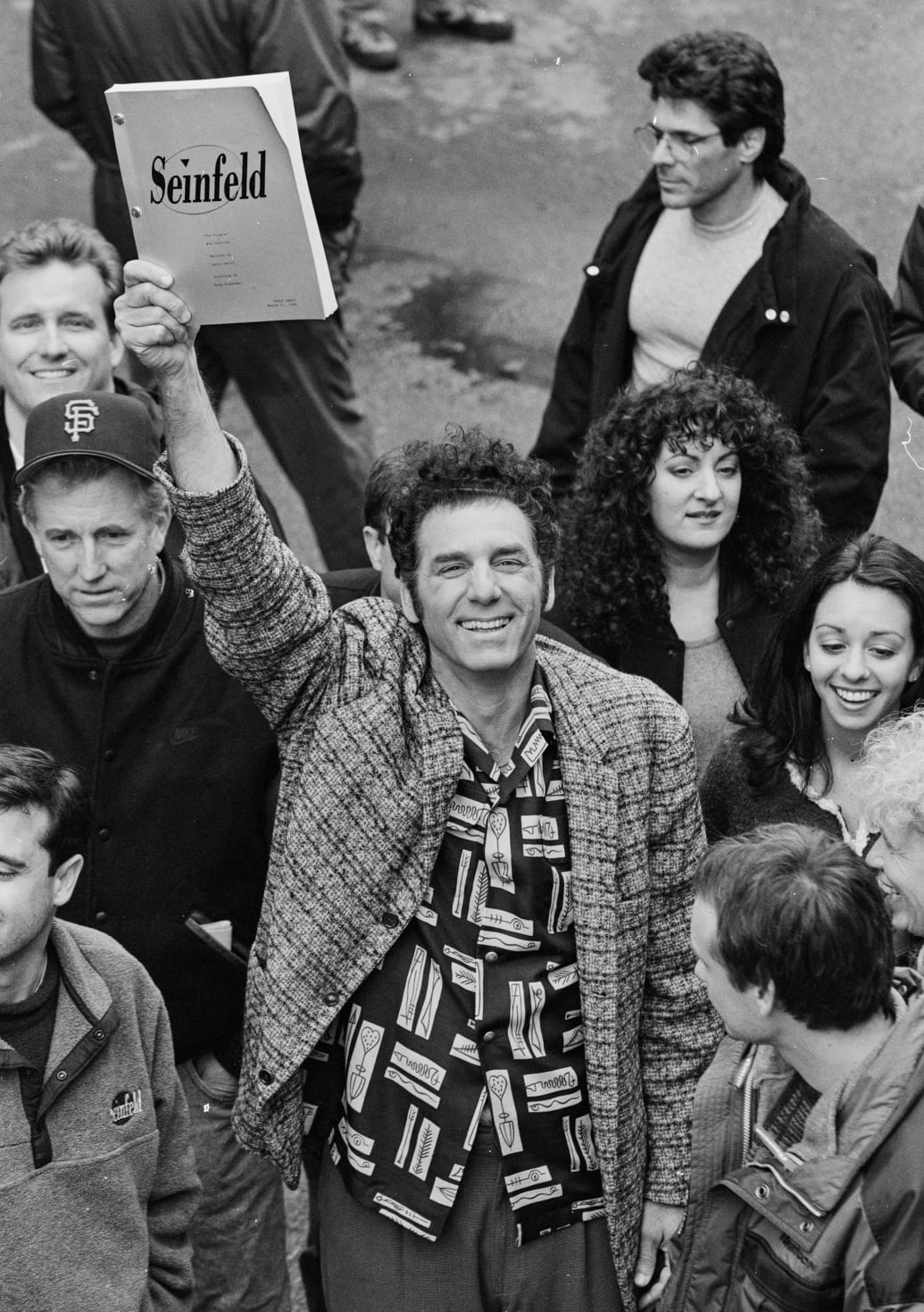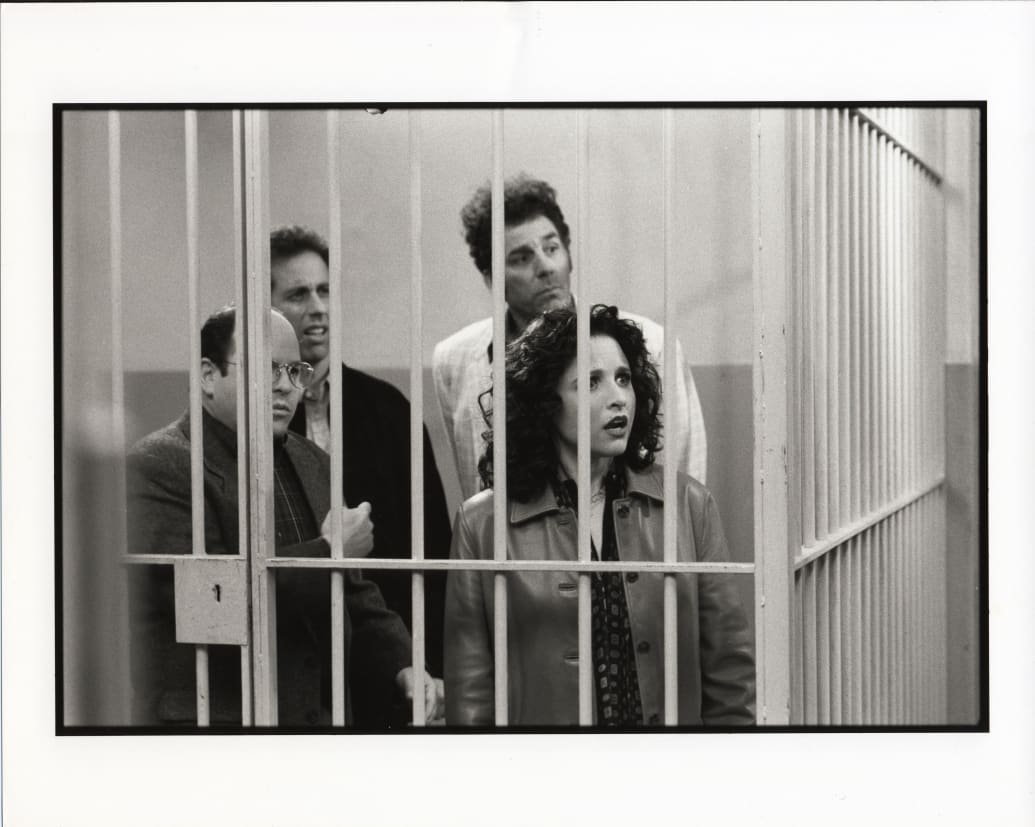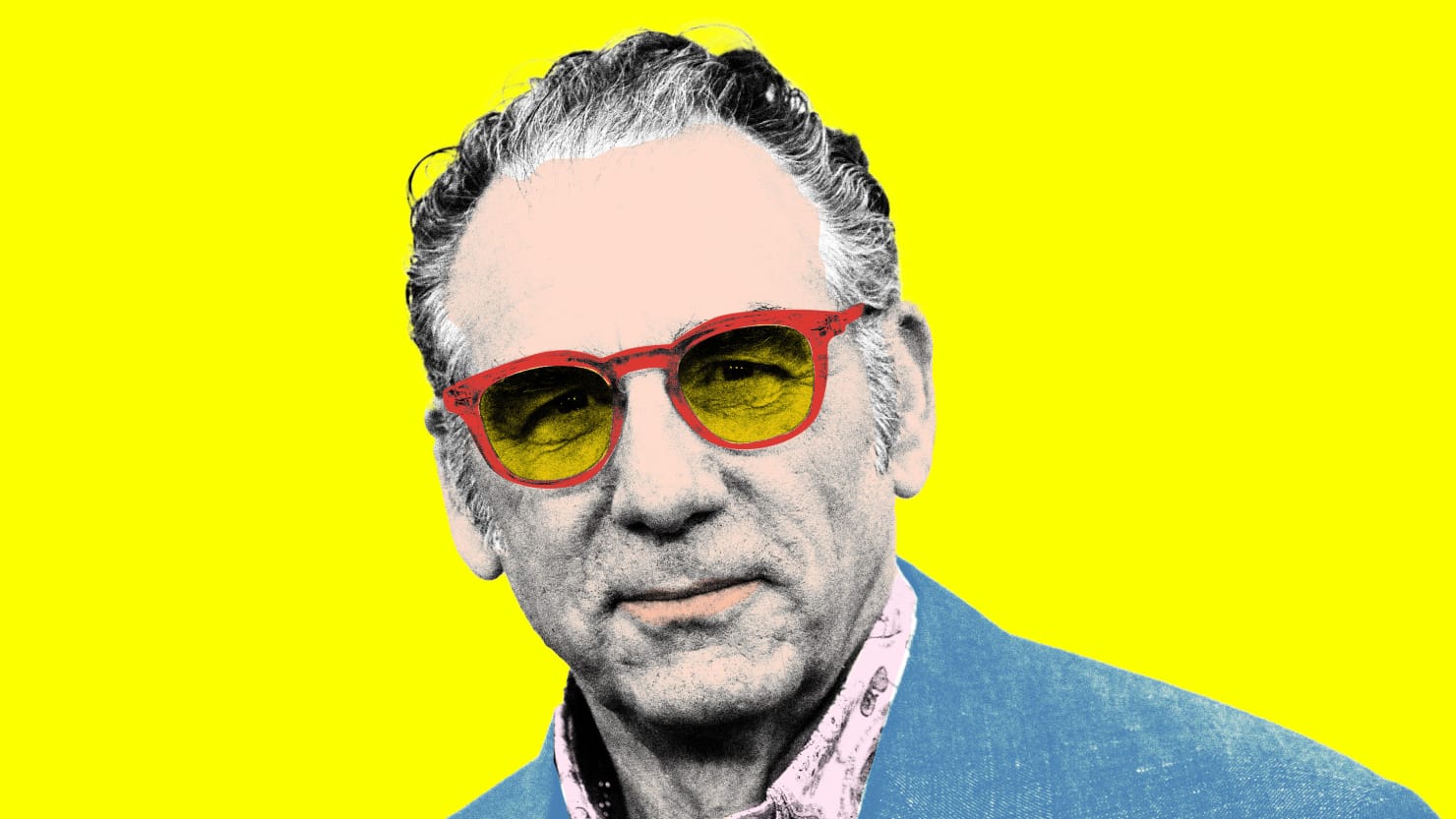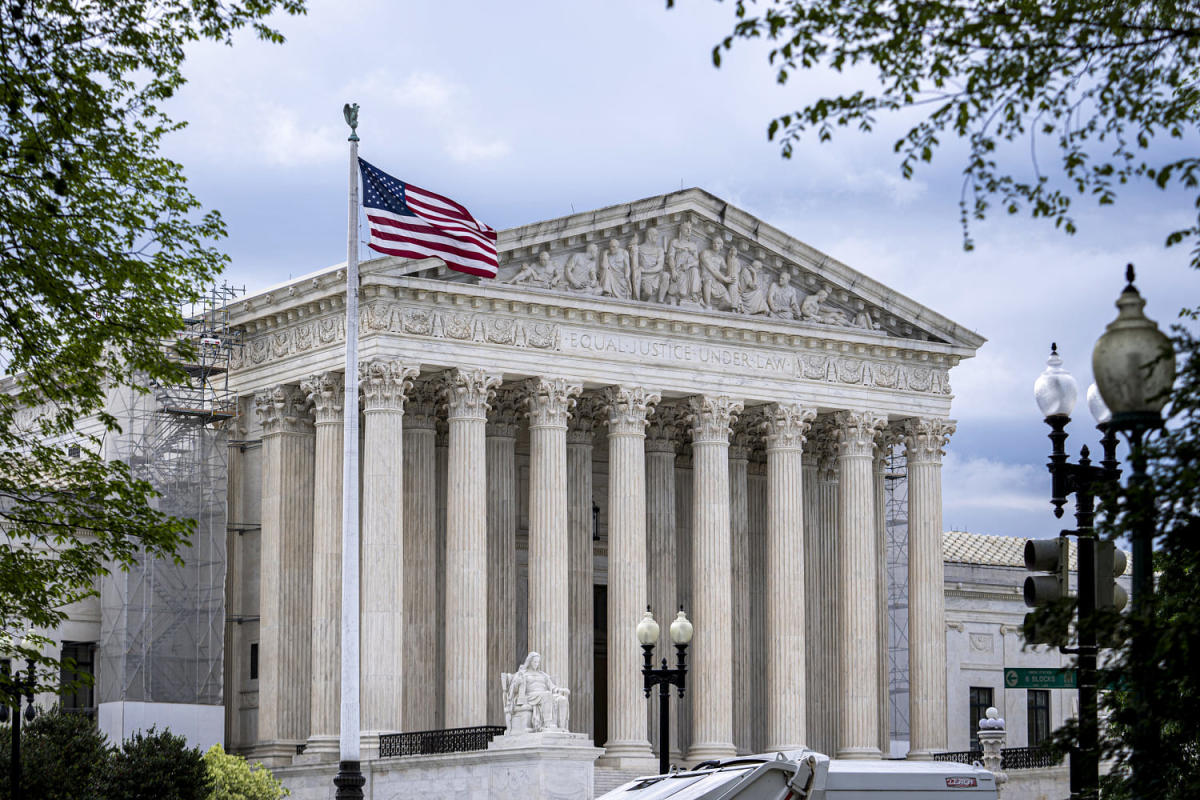During his nine seasons on Seinfeld, Michael Richards was among the most popular and recognizable figures on television, winning three Emmy Awards for his indelible portrayal of Cosmo Kramer and delighting tens of millions of fans on a weekly basis. But in the 18 years since he was caught on camera shouting the “N-word” at a comedy club heckler, he has essentially disappeared from the public eye.
That’s what makes his new memoir, Entrances and Exits, out on Tuesday, such a revelation.
Other celebrity books are full of anecdotes that have mostly been told ad nauseam on talk shows and interviews over the years. But chapter after chapter, Richards’ book is littered with stories about his time before, during, and after Seinfeld that feel genuinely fresh—even for obsessive fans of that series.
With that in mind, below are some of the many things readers will learn from this surprisingly thoughtful and introspective book, beginning with Richards’ attempt to grapple with that fateful night at the Laugh Factory in 2006.
Michael Richards as “Kramer” prepares to burst through the door during the final days of shooting Seinfeld, April 3, 1998 in Los Angeles, California.
David Hume Kennerly/Getty
The Apology
The chapter on Richards’ career-ending meltdown comes near the very end of the book, but readers could be forgiven for skipping ahead to see how he decides to talk about it at length for the first time.
At the time of the incident, he was just getting back into stand-up following the soul-crushing failure of The Michael Richards Show, a mostly forgotten post-Seinfeld sitcom that was canceled after just a handful of episodes.
Recounting what happened after a heckler shouted, “You’re not funny!” from the balcony of the Laugh Factory in Hollywood, Richards can’t even bring himself to spell out what he shouted back—he repeatedly called the man the “N-word”—only acknowledging that the room had been “shocked by my anger and foul language.” Richards says he wanted to find the man and “make peace” after the show, but he was already gone after being asked to leave and refunded his money by the club.
“Yeah, I said the N-word,” Richards writes. “And then some. What the hell’s the matter with me? Anger. Anger was the matter with me. I fucked up.” As he realizes that an audience member’s footage of the incident is making him the “biggest news story” in the country, all he can say is, “I have no defense. I blew it.”
Richards says he turned down a handwritten invitation from Larry King for a chance to “tell your side of the story” (along with every other interview request) in favor of joining Jerry Seinfeld via satellite on The Late Show with David Letterman to offer his “sincere apology.” But even in the moment, he knew it wasn’t going to be enough to repair his broken reputation. “I have work to do,” he writes, later revealing that he essentially absconded to Mexico for several weeks to begin his spiritual healing journey.
‘No one else had any chance’ to play Kramer
In his foreword, Seinfeld calls the audition process for the role of Kramer (originally named Kessler in the pilot) a “charade.” He first got the idea to cast Richards after seeing a character bit he did with Jay Leno during one of his stints guest-hosting for Johnny Carson on The Tonight Show. Larry David was initially skeptical because he envisioned the character with the same ponytail that his friend, the “real” Kenny Kramer, wore in his hair. When Richards read for the network, an NBC executive turned to Seinfeld and said, “Well, if you want funny…”
NBC was worried about the height of Kramer’s hair
As Kramer’s hair started getting higher, Seinfeld informed Richards that the network was concerned. “They don’t think the audience will like Kramer if he looks too crazy,” Seinfeld told Richards, before revealing that he was able to appease those concerns by telling NBC, “We’re making a comedy.”

Michael Richards holds a script of the final episode in the air amongst a sea of cast and crew members from the hit television show “Seinfeld,” April 3, 1998 in Studio City, California.
David Hume Kennerly/Getty
Richards originally conceived of Kramer as an agoraphobic introvert
After David told him that “Kessler” had “agoraphobia,” the character started to click for Richards, who took some inspiration from his mentally unstable grandmother. “I’m an introvert and I can feel stuck in myself,” he writes. “I had a grandmother who was ‘severely introverted’ and stuck in herself. How does Kessler try to get himself to meet the world? It’s all in Jerry’s apartment. For me, everything happens there.”
He then modeled his character after a dog that was cut from the pilot
Once the show was picked up beyond its first four episodes (and Richards realized that Kramer would be leaving the confines of his apartment building) he decided to take inspiration from his character’s dog that was cut after the pilot because David thought it would be “too much of a hassle.” Richards writes, “If I can’t have a dog, I’ll be a dog! … I’ll play the guy as a dog coming into Jerry’s apartment as playful, friendly dogs do, a dog spirit bounding through the door, sniffing, curious, wondering what’s going on in here.”
If Kramer wasn’t an introvert, Richards definitely was
Throughout the book, Richards reveals himself to be an extremely private and reserved person who always felt somewhat on the outside of his three main co-stars on Seinfeld. The most striking example of this comes when he describes how after live tapings of the show, Seinfeld, Jason Alexander, and Julia Louis-Dreyfus would all go get dinner together (an image that evokes the booth from Monk’s Café in the show) while Richards would go home, put on a scuba mask, and sit in a chair that was attached to the bottom of his pool.
Later, Richards shares a story about pulling a similar stunt, sans scuba gear, when he went to a party at Billy Crystal’s house and made everyone there “uncomfortable” by jumping into the pool with his clothes on, holding his breath for “well over a minute” at the bottom of the pool. “The truth is I liked it better down there than with everybody up on the patio,” he writes.
‘Looking for laughs in all the wrong places’
The Laugh Factory meltdown was far from the first time Richards courted danger from the stand-up stage. He recalls a night early in his career at the Comedy Store in L.A. when he walked into the audience and started rifling through a woman’s purse, spilling some of her pills on the ground, prompting her to shout out, “My medication!” The woman sued the Comedy Store, which ended up settling with her for $2,500. As a result, the club issued a new rule to comics about not touching audience members’ belongings, much to the chagrin of its more experimental comedians. “Way to go, Richards,” he remembers Robin Williams telling him after that.

Jason Alexander, Jerry Seinfeld, Michael Richards, and Julia Louis-Dreyfus stand behind bars in a scene during the last days of filming the final episode in Studio City, California, April 3, 1998.
David Hume Kennerly/Getty
Richards was in on the infamous Andy Kaufman fight on ‘Fridays’
When Andy Kaufman guest-starred on the short-lived sketch show Fridays and famously broke character in the middle of a live sketch—a scene that is depicted in the biopic Man on the Moon—Richards was the only cast member who was in on the gag. That meant Richards was able to prepare the physical punchline he put on the scene, walking over and dropping the stack of cue cards in Kaufman’s lap after he refused to read the lines as written. “Everyone around us thinks the whole thing was real,” Richards recalls in the book. “Well, that’s his genius at work.”
After Fridays was canceled, Richards says he tried to put together a filmed version of Waiting for Godot at HBO set in the Mojave Desert with Kaufman, Jim Carrey, and the drag queen performer Divine. But Samuel Beckett shut it down with this note: “If I intended to have my play set in the California desert under a freeway, I would have written it that way! Absolutely not!”
‘He’s on drugs, right?’
Richards shares the story of how he got fired from a guest spot on Miami Vice because he drank too many “Cuban coffees” and essentially overdosed on caffeine. He was strapped to a gurney and carried off the boat where he was supposed to shoot his scene with star Don Johnson. “What’s with this guy?” he heard Johnson say as he passed. “He’s on drugs, right?”
Jason Alexander threatened to quit ‘Seinfeld’ because he wasn’t in ‘The Pen’ episode
Richards was “embarrassed” when he found out he wasn’t in “The Chinese Restaurant” episode in Season 2 (David told him it wouldn’t happen again). But when both Kramer and Alexander’s George were absent from Season 3’s “The Pen,” which finds Jerry and Elaine traveling to Florida together, Alexander actually threatened to quit the show. Richards describes him as being “furious,” fearing that a show centered on two male friends could turn into one primarily about a will they/won’t they romance between two ex-lovers.
Richards provided Kramer’s wardrobe, sanded down the soles of his shoes, and wore extensive padding under his clothes for pratfalls
Not only did Richards source and provide all of the strange vintage clothing Kramer wore, especially in the early years, but he also sanded down the soles of the Doc Martens he wore in every episode—“as smooth as bowling shoes”—to help him slide through Jerry’s apartment with less friction. When he returned for the Seinfeld reunion season of Curb Your Enthusiasm years later, something he was very hesitant to do following the Laugh Factory incident—“The last thing I want to do is be in front of a TV camera, playing ‘myself’”—he brought those same boots out of retirement.
He also reveals that he would put “body armor” under his costumes to protect himself during pratfalls, including a steel plate to protect his back (especially when going at it with Danny Woodburn’s character Mickey), along with “elbow and knee pads, hip girdles rigged with plastic shields and a butt pad.”
The actor who played Elaine’s father was banned from the show by Jerry Seinfeld
Richards calls actor Lawrence Tierney’s performance as Elaine’s father “riveting” in the Season 2 episode “The Jacket.” But he also reveals why Tierney never returned to the show: “He made an impression by actually swiping one of the butcher knives from Jerry’s kitchen,” he writes, adding that Tierney later used his “tough guy persona” to suggest that he “knew how to use” it. Seinfeld “never had him on the set again” and he and David used to joke with the cast, “If you aren’t good, we’re going to invite Lawrence Tierney back.”
Richards only started winning Emmys after submitting himself
Seinfeld, Louis-Dreyfus, and Alexander were all nominated for acting Emmys in 1992, but Richards was left out. That’s because, he writes, Castle Rock didn’t submit his name along with the other three. When Richards found out, he started submitting himself, paying his own $800 application fee. He would go on to win the Best Supporting Actor Emmy that year (1993), the following year, and again in 1997, for the same category in which Alexander was nominated eight times without ever winning. Louis-Dreyfus only won a single Emmy for playing Elaine (in 1996) before going on to break records with her many Veep wins. And Seinfeld somehow only has one Emmy to his name, for Best Comedy Series in 1993, despite garnering 20 nominations over the course of nearly 30 years.
That time Richards showed up to a black-tie NBC gala in a hotel robe
There’s a long story in the book about a 1994 conference in Florida that the Seinfeld cast attended together. Richards infamously went to a big black-tie event in a robe because the hotel he was staying at lost his tuxedo. Everyone, including NBC President Warren Littlefield, assumed it was a deliberate comedy bit (“You’re a fucking genius,” he recalls Littlefield telling him). But after he bad-mouthed the hotel all night, he found out that it was owned by the “mob,” whose boss he feared might throw him off the balcony, but instead hooked him up with the “presidential penthouse” for his trouble.
Seinfeld and Richards used to street-race their cars to the studio lot
When Richards would occasionally pull up alongside Seinfeld on Coldwater Canyon on their way to work, they would inevitably race “up to 100 miles an hour down Ventura Boulevard.” Seinfeld would be in one of many Porsches, Richards in his ‘56 Chevy Nomad or a new Mercedes S600 coupe “with a V12 engine that leaves the pavement in flames.” He describes Seinfeld as a “trained” racer with inherently faster cars, but himself as “insane” and “fearless,” which makes them something of an even match.
Kramer’s golf plot lines were a direct result of Larry David’s obsession
David’s “enthusiasm for golf was given to Kramer,” Richards writes, explaining that he himself had no time for the sport. Anytime Kramer would express his frustration about his game, “that’s all Larry,” culminating in the episode “The Marine Biologist,” which ends with George’s “brilliantly performed” monologue about pulling a golf ball out of a whale’s blowhole. “Is that a Titlelist?” Kramer asks at the end of the episode.
He turned down two offers to host ‘Saturday Night Live’ and a star on the Hollywood Walk of Fame
Richards’ introversion led him to refuse a star on the Hollywood Walk of Fame and turn down two separate opportunities to host Saturday Night Live. He also said no to Diane Keaton, who wanted to direct him in a broadly comedic movie (produced by Steven Spielberg) in which he played a boy’s dog who is magically transformed into a man. He instead accepted a smaller role in Keaton’s 1995 drama Unstrung Heroes.
The role of Izzy Mandelbaum was written for Jerry Lewis
Jerry Lewis wanted $50,000 to appear in “The English Patient” episode as Izzy Mandelbaum, the octogenarian who challenges Jerry to a weight-lifting competition. But Seinfeld told Richards there was no way he was going to get that much for the guest spot: “It’s not going to happen.” Richards suggested Tony Curtis instead, but they ended up bringing in Lloyd Bridges, who reprised his role in the final season shortly before he passed away in 1998 at 85 years old.
The lead role of ‘Monk’ was written for Richards
Toward the end of Seinfeld’s run, NBC offered Richards the lead role in a new show called Monk that he says was “written with me in mind” to play the obsessive-compulsive detective that would ultimately win actor Tony Shalhoub multiple Emmys. Despite believing the role was “perfect” for him, Richards “turned it down” because he was “too up to my neck doing Seinfeld every week to give this new show a real look.” Ultimately, he thinks he “couldn’t have topped” the work Shalhoub did on that show.
Richards never watched ‘Seinfeld’ when it was on
He’s aware of the show’s popularity because he sees the ratings and, to this day, people come up to him and quote their favorite Kramer lines to him, but he often has no idea what they are talking about. “I’m too critical of myself,” he explains. He would perform the scenes from one episode and then “move on to the next one… Then it’s down to the bottom of my swimming pool.”
He hated his performance in the divisive series finale
“Saying goodbye is never easy,” Richards writes, saying that while he thought the courtroom conceit was “clever,” he wondered at the time “whether it will hold up and deliver the kind of satisfying ending that fans want and the show deserves.” (He wanted the four friends to escape from jail and flee to South America together.) But more than that, with all of the guest stars and other people hanging around the taping, Richards felt like he couldn’t “function,” was “half in and out of Kramer,” and for the first time since the pilot, just felt “off”: “The beginning and the end, a perfect circle.”
There were ‘a few hugs’ when the final taping was over
David’s mantra for Seinfeld was famously “no hugging, no learning,” but Richards says there were actually “a few hugs” off screen when they finished taping the final episode. Seinfeld was among the cast and crew who “lingered” on set that night until the sun came up, but Richards was “long gone, slipped out the back,” taking those Doc Martens with him on the way out.

Sarah Wilson is your guide to the latest trends, viral sensations, and internet phenomena. With a finger on the pulse of digital culture, she explores what’s trending across social media and pop culture, keeping readers in the know about the latest online sensations.








